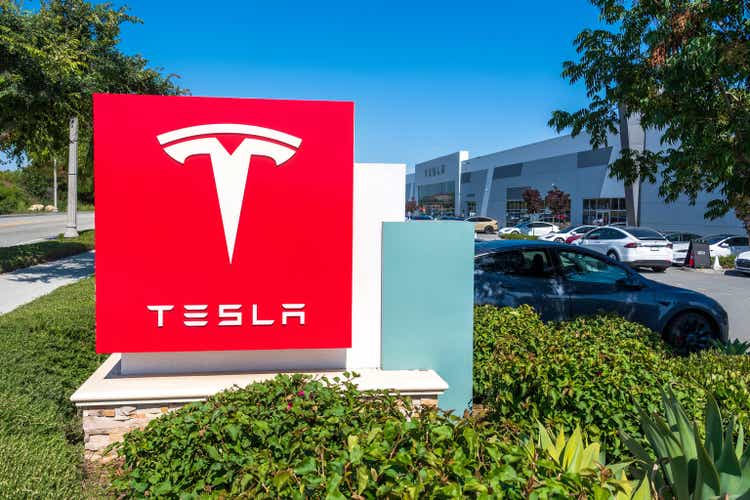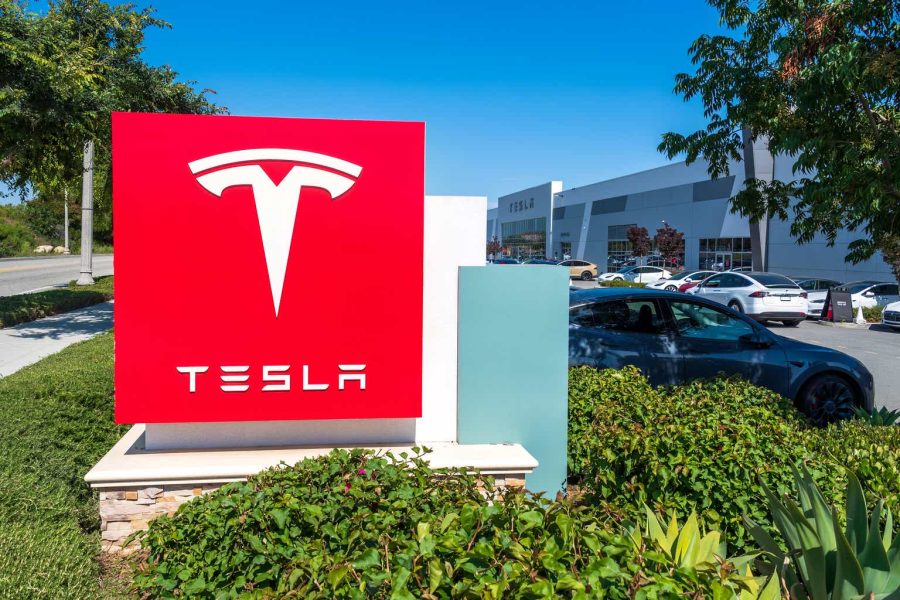Summary:
- Tesla shares rally after exceeding vehicle sales expectations, with most sales coming from Models 3 and Y.
- Fed Chairman Powell leans dovish, citing cooling economy and inflation progress.
- Six Flags-Cedar combined company begins trading, with a positive outlook from Morgan Stanley.
baileystock
Listen below or on the go on Apple Podcasts and Spotify.
Tesla Q2 deliveries handily top expectations. (0:15) Fed’s Powell sees disinflation resuming. (1:43) Disney content set for a ‘major turnaround‘? (4:28)
This is an abridged transcript of the podcast:
Our top story so far. Tesla (NASDAQ:TSLA) rallied with shares approaching a 2024 high after it reported 443,956 deliveries for Q2, beating expectations of a little more than 439,000 vehicles.
Most of Tesla’s sales came from the smaller and cheaper Models 3 and Y lines, with the company selling only 21,551 of its more expensive models that include X and S, as well as the new Cybertruck.
Wedbush Securities analyst Dan Ives said Q2 was a huge comeback performance from Tesla and CEO Elon Musk, with the Street expecting a clear miss this quarter amid choppy EV demand. Ives reiterated that Wedbush sees the automaker as more of an AI and robotics play than a traditional car company.
Meanwhile, CFRA analyst Garrett Nelson noted that TSLA continues to ride a wave of positive momentum following its annual meeting in June, at which shareholders re-approved Musk’s 2018 compensation plan.
“At the meeting, we think Musk successfully shifted investor focus to long-term opportunities in AI, robotics, energy storage, and other business lines, diverting attention away from near-term challenges,” he said.
In addition, Rivian Automotive (RIVN) said it produced 9,612 vehicles at its manufacturing facility in Normal, Illinois, during Q2 and delivered 13,790 vehicles during the period. The EV maker said that was in line with expectations, and management reaffirmed full-year guidance for annual production of 57,000 total vehicles.
Turning to the economy, Fed Chairman Jay Powell said there are signs that consumer prices are resuming their path of disinflation.
While trying to strike his usual balance, his remarks at the Forum on Central Banking in Portugal leaned a little dovish. He said that he would like to see more data like the recent figures to be comfortable cutting, but also said the risks between inflation and the labor market are coming into “better balance.”
“We’re getting a gradually cooling economy, a gradually cooling labor market, progress on inflation, 4% unemployment, and 2% growth. We’re getting kind of what we want to have,” Powell said.
Following the event, expectations for a quarter-point rate cut in September rose about 5 percentage points. Fed funds futures are now pricing in about a 70% chance that rates are lower after that meeting. Chances of three cuts by the end of 2024 moved back above 20%.
Looking at today’s data, it’s still a labor market that just won’t quit. The May Job Openings and Labor Turnover Survey, or JOLTS, showed openings at 8.1 million, higher than forecast and up from a downwardly revised 7.9 million in April.
The quits rate stayed steady at 2.2%, and the layoff rate stayed steady at 1%.
Raymond James’ Chief Economist Eugenio Aleman notes, “The largest decline in job openings occurred in the leisure and hospitality sector as job openings in the accommodation and food services sector declined by 147,000 job openings. It is clear that state and local governments are bucking the overall job opening trend and contributed to an increase in job openings in May compared to the previous month.”
Citi downgraded home builders Lennar (LEN) and D.R. Horton (DHI) to Neutral from Buy on softening housing activity this summer. Citi said it sees limited near-term catalysts for the stocks until 2025, with September rate cuts at least partially priced in.
Susquehanna Financial upgraded PayPal (PYPL) to Positive from Neutral on valuation, with a price target of $71. Analyst James Friedman is positive on PYPL making profitable growth a top priority.
And Bank of America reiterated a bullish view on Disney (DIS). Analyst Jessica Reif Ehrlich says she believes Disney will outperform peers in 2024 as a result of recent price increases across the Disney+/Hulu/ESPN+ universe, strong advertiser demand for the recently launched ad-supported tier on Disney+, cost discipline across the direct-to-consumer business, and continued robust theme park demand with several levers for future growth.
Crucially, she also thinks the content slate is showing signs of a turnaround after Inside Out 2 surpassed $1 billion at the global box office in its first three weeks. Disney is trying to strike a better balance of originals and leveraging IP with the studio business.
And speaking of amusement parks, a combined Six Flags Entertainment—symbol (FUN)—started trading today following the closing of the merger between Cedar Fair and Six Flags late on Monday.
The new theme park operator will control dozens of theme parks, water parks, and resort properties across the U.S., as well as Canada and Mexico. The boosted geographic mix may help smooth out the impact of severe weather events on earnings. The newly formed company will have its headquarters in Charlotte, North Carolina.
CEO Richard Zimmerman says, “Our enhanced financial flexibility will enable us to invest in new rides, attractions, food and beverage options, and state-of-the-art consumer technologies, ensuring continuous improvement and innovation and that each park visit is more exciting and memorable than the last.”
Ahead of the closing, Morgan Stanley said it is bullish on Six Flags, even with both stocks up at least 30% on a year-to-date basis. Analyst Thomas Yeh expects synergies and a revenue catch-up opportunity to support high single-digit EBITDA growth and valuation upside.
Morgan Stanley’s Overweight rating is underpinned by the view that the current valuation still under-appreciates the growth potential of the pro forma company. Yeh and his team see opportunities for the new company to continue executing on an attendance recovery within the legacy Six Flags footprint.
Meanwhile, Wall Street Breakfast readers weighed in with what they thought would be the best-performing S&P stock in the second half of the year.
Nvidia (NVDA) was the clear winner, with 31% of the more than 500 responses to the survey. Other big AI names also scored silver and bronze, with Microsoft (MSFT) and Apple (AAPL) receiving 8% and 6% of the total vote, respectively.
Amazon (AMZN), Alphabet (GOOG), and Super Micro Computer (SMCI) rounded out the list.
And in the Wall Street Research Corner
BofA Securities is out with a new list of 10 short-term stock recommendations for the third quarter in nine industries.
Strategist Anthony Cassamassino says the list of nine Buys and one Underperform are believed to have “significant market and business-related catalysts in the quarter ahead.”
Among the Buys are General Aerospace (GE), which is “strongly positioned to benefit from secular commercial aerospace growth,” Goldman Sachs, which has “a compelling risk/reward to gain exposure to a cyclical rebound in investment banking activity,” and Palantir (PLTR), which is “at the early stages of its network effect, as each additional user brings tremendous value to the connected network.”
The one Sell idea is CarMax (KMX), as “the sourcing environment for used cars is still challenging, especially for late model used vehicles,” a dynamic that will likely continue through 2025 and onwards, “which should hinder CarMax’s same-store unit growth.”

